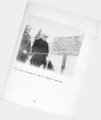| OCR Text |
Show Exposure to sun and wind action is another item for the snow observer to note* Southern exposures, of course, will be more subject to sunslides, both the shallow damp slides of midwinter and the deep, wet avalanches of spring, Where natural reflectors exist the effect will be more violent. And the snow ranger must remember that sun action need not be extensive. A single wad of damp snow dropping from a tree or a rock outcrop is often sufficient to put a whole slope in motion. The combination of forces in a snowfield is frequently as delicate as in a balancing rock and as easy to disturb. Exposure to wind is one of the most important of all the factors influencing avalanche hazard and the one which fluctuates the widest. Wind tends to remove snow from a wind-beaten slope and stabilize that which remains. It tends to deposit snow on lee slopes and form cornices or unstable and dangerous snowslabs. In other words, wind creates both extremes at the same time and may be promoting avalanches in one area while preventing them in another only a short distance away. Analysis of the terrain is fundamental. It will influence the general layout of the area and the location of all major improvements. It will in fact determine whether or not the area is feasible for development. An area which lacks sufficient protected locations for lifts, lodges, shelters, ski runs and highways is undesirable no matter how attractive snow conditions may be. At Alta, terrain is classified as follows• 1. High continuous hazard: closed throughout the winter. This includes particularly high level and critically steep locations not actively controlled. In some cases slopes not dangerous in themselves but overhung by such areas are included. All such areas at Alta could be controlled by the use of explosives. Two were so removed from the classification during the winter of 19^7-48. 2. High intermittent hazard: Locations in this classification are scattered throughout the area. They are subject to control by skiing or explo-r sives. 3. Low intermittent hazard: The distinction between "low11 and "high" is based on intensity rather than frequency. The major part of the Alta area lies in the low intermittent hazard class. k. Minimum hazard: Practically every part of Alta is either a slide path in itself or overlooked by one. But due to the control effect of continuous skiing a portion of the lift-served area is essentially free of hazard. It can be skied unless weather conditions are severe enough to keep the skiers indoors-which is severe weather indeed. Climate and terrain together are the two basic factors, the only real cause of avalanches. All other factors, wind included, are contributory. This may be a statement of the obvious, but it is necessary because of confused thinking on the subject. It is a temptation to include wind action as fundamental since the most violent and destructive avalanches are nearly always |








































































































